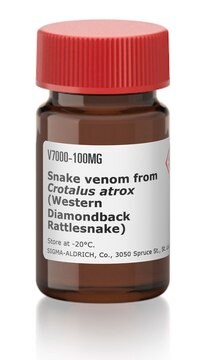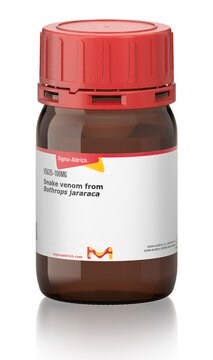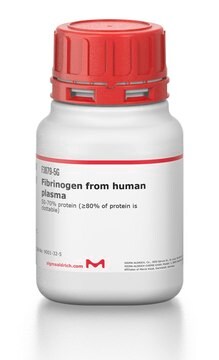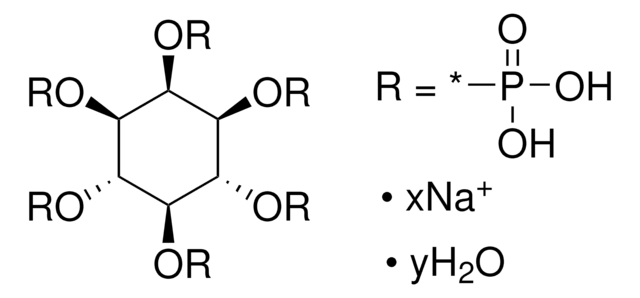E0504
Ecarin from Echis carinatus venom
prothrombin activator
Sign Into View Organizational & Contract Pricing
All Photos(1)
About This Item
Recommended Products
biological source
Echis carinatus venom
Quality Level
packaging
vial of 45-55 units
storage temp.
−20°C
Application
Ecarin from Echis carinatus venom is the primary reagent in the ecarin clotting time (ECT) test, which is used to monitor anticoagulation and thrombin inhibition. It has been used in studies to test the effectiveness of medications for the treatment of venous and arterial thromboembolism.
Ecarin activity is the principal behind the Ecarin Clotting Time (ECT) assay, which is used to assess antithrombotic effect and thrombin inhibition.
Biochem/physiol Actions
Prothrombin activator
Unit Definition
One unit will activate prothrombin to produce one unit of amidolytic activity at pH 8.4 at 37 °C. One amidolytic unit will hydrolyze 1.0 μmole of N-p-tosyl-Gly-Pro-Arg-p-nitroanilide per min at pH 8.4 at 37 °C.
Signal Word
Danger
Hazard Statements
Precautionary Statements
Hazard Classifications
Resp. Sens. 1 - Skin Sens. 1
Storage Class Code
11 - Combustible Solids
WGK
WGK 3
Flash Point(F)
Not applicable
Flash Point(C)
Not applicable
Personal Protective Equipment
dust mask type N95 (US), Eyeshields, Gloves
Certificates of Analysis (COA)
Search for Certificates of Analysis (COA) by entering the products Lot/Batch Number. Lot and Batch Numbers can be found on a product’s label following the words ‘Lot’ or ‘Batch’.
Already Own This Product?
Find documentation for the products that you have recently purchased in the Document Library.
Elise S Eerenberg et al.
Circulation, 124(14), 1573-1579 (2011-09-09)
Rivaroxaban and dabigatran are new oral anticoagulants that specifically inhibit factor Xa and thrombin, respectively. Clinical studies on the prevention and treatment of venous and arterial thromboembolism show promising results. A major disadvantage of these anticoagulants is the absence of
Wei Zhou et al.
Stroke, 42(12), 3594-3599 (2011-10-15)
Dabigatran-etexilate (DE) recently has been approved for stroke prevention in atrial fibrillation. However, lack of effective antagonists represents a major concern in the event of intracerebral hemorrhage (ICH). The aims of the present study were to establish a murine model
Lambro A Johnson et al.
Analytical biochemistry, 608, 113907-113907 (2020-08-20)
Snake venom prothrombin activators such as Ecarin are readily assayed by continuous spectrophotometric monitoring of p-nitroaniline production in a one step assay containing prothrombin and a p-nitroanilide peptide substrate for thrombin. The coupled reactions result in accelerating p-nitroaniline (pNA) production
Kevin Dietrich et al.
Thrombosis research, 135(4), 630-635 (2015-02-27)
Age-related changes in the hemostatic system result in variation in response to anticoagulants and coagulation assays over childhood. This study used in vitro methods to determine i) optimum coagulation assays for dabigatran in children and ii) anticoagulant effect of dabigatran
Our team of scientists has experience in all areas of research including Life Science, Material Science, Chemical Synthesis, Chromatography, Analytical and many others.
Contact Technical Service







